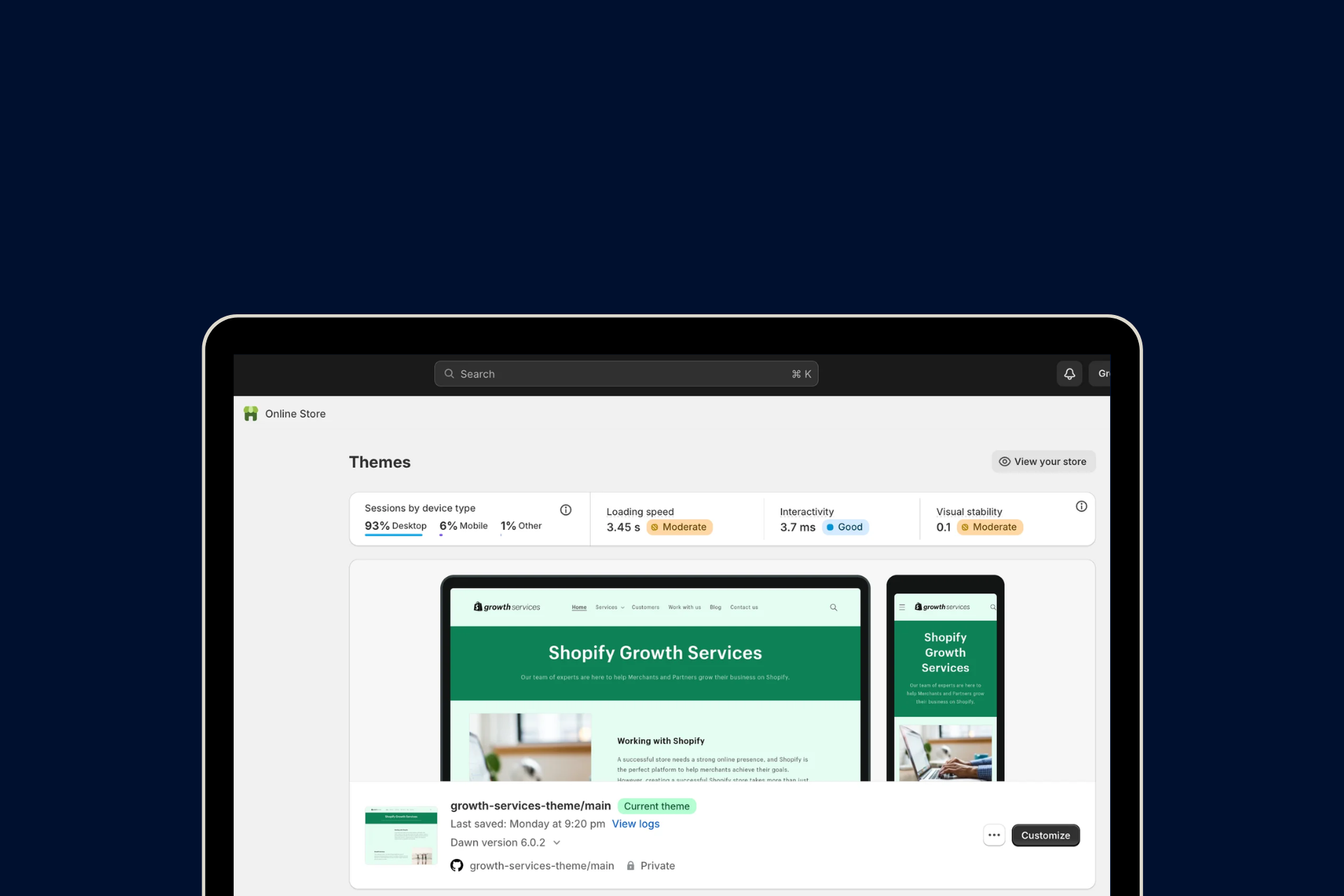If you sell online as well as retail, you need to be able to keep your sales integrated and accessible within one dashboard. This is where Shopify POS comes in. Using this smart Shopify app, you can ensure that your store’s sales are in one place, regardless of the channel.
Let’s dive into what Shopify POS is and how you can enable it for your business.
What is Shopify POS?
Shopify POS (Point of Sales) unifies your online and retail stores to help you sell better, manage your store, and build relationships with your customers across different channels. It has all the essential features you need to make sales, track performance, and manage customers, orders, and inventory. With local pickup and delivery—and the ability to sell inventory from other locations—you can reach more customers and give them seamless shopping experiences.
In fact, stores using Shopify POS to unify their in-store and online sales see a 30% growth in revenue year over year.
Features of Shopify POS
- Accept payments anywhere on iPhone/iPad
Shopify POS lets you place orders in-store using easy technology— iPhone/iPad. With its easy-to-use interface, you can accept payments without any hassle.
- Manage your product catalog and stay updated about your inventory
Shopify POS gives you a detailed look at your product catalog, allowing you to manage your inventory in one place. This way, you can keep an eye on low stocks in-store or online and order new inventory before you run out of stock.
- Send receipts via email and SMS
Using POS, you can instantly send receipts of the order via email and SMS, no printed receipts needed!
- Sell and accept gift cards
Customers in-store can buy gift cards and redeem virtual gift cards they have from your store on an order.
- Collect and manage customer profiles created online or in-person
Retrieve customer profiles in-store when existing customers make a purchase and create a new one when new shoppers buy from your store.
- Manage online and in-store orders in one place
Keep your sales dashboard in one place and connect your store sales across different channels.
- Integrate your loyalty program
Shopify POS allows you to enable your loyalty program so that customers can redeem their points in-store.
How does Shopify POS Work?
With Shopify POS, you have a range of features at your fingertips. Using the app, you can connect your sales in-store and online and view all these sales activities on your POS app. This way, you don’t have to worry about managing two separate sales records. Shopify POS integrates your sales and gives you a unified dashboard.

Using POS, you can make checkout simpler in-store. POS works on iPhone or iPad and allows you to provide a seamless checkout process. You can specify any discounts that the shopper wants, customize the order, and even tap into your customer records to select which customer is shopping from you.

If you have enabled a loyalty program on your online store, you can easily reward customers for making a purchase. Your customers can also redeem their loyalty points on an order placed in-store.

Shopify POS also allows you to adapt your store’s management according to your preferences. You can set up different delivery options for shoppers– buy online, local pickup; or buy in-store, ship to customer. With the app, you can track which orders are being picked up on a certain date and filter your orders according to these details.

Lastly, Shopify POS gives you a daily sales report, allowing you to access your store’s performance and use this data to optimize your processes.
Install Shopify POS to keep your store’s sales unified.
Best Practices to Set Up Shopify POS
Once you’ve installed Shopify POS, you can follow these 8 best practices to set up a unified sales manager and provide a positive customer experience across channels.
1. Ensure that your product catalog on Shopify is synced with POS
Once you’ve installed Shopify POS, ensure that your product catalog on your Shopify dashboard is synced with Shopify POS. With this sync, you can bill products quickly in-store without having to manually enter any details. You can do this by checking the ‘POS’ channel within the ‘sales channel’ section on each product.
While you sync your product catalog to Shopify POS, ensure that your pricing online and in-store have no discrepancies.
2. Charge taxes based on your physical location
Taxes are a part of every order placed on your store— online as well as at your physical locations. When using Shopify POS, you need to first set up taxes for your store. You can add a dynamic tax based on your store's location, country, and requirements as a seller.
Learn how to set up tax rates for Shopify POS.
3. Set up the right hardware
When setting up Shopify POS, you need the right hardware like from barcode scanners to iPads. Without these, you won’t be able to integrate your in-store sales with Shopify POS.
4. Set up payment on POS
Set up multiple payment methods on Shopify POS so that retail shoppers can make payments easily. Shopify allows you to enable multiple third-party payment methods, like debit cards, digital wallets, and PayPal.
5. Test out different functionalities before you start capturing orders
Since you may be new to the app, it’s best to first test out different functionalities— placing an order, refunding, creating a gift card, adding discounts. It’s crucial to get familiar with the platform. If you have staff, you can walk them through its use and onboard them onto this new system with videos available from Shopify.
Shopify’s help guide has every walkthrough you need to learn about Shopify POS and understand how it works.
6. Integrate with marketing apps
With an online store, merchants can easily dissect their shopper segments and send targeted and personalized messages to them based on conditions and shopper history. With Shopify POS, you can easily set up personalized marketing for your in-store shoppers as well.
Shopify POS integrates with marketing apps like SMSBump and Seguno so that you can send SMS campaigns based on the shopper’s order history, preferences, wishlists, loyalty points, etc.
7. Enable your loyalty program
Shopify allows you to integrate your loyalty app with Shopify POS. With this integration, shoppers in-store can earn loyalty points as well as redeem their points on an order. By allowing shoppers to participate in your loyalty program even in-store, you can ensure that shoppers get the same experience from your brand regardless of the channel.
Apps like Smile, LoyaltyLion, and Rise integrate seamlessly with POS.
8. Integrate with delivery preference apps
Zapiet's Store Pickup + Delivery app allows you to provide these options to shoppers in-store and online. Once integrated with Shopify POS, the app provides these details within your dashboard, allowing you to better manage pickups for the day.
Pro-tip: You can find all the Shopify apps that integrate with Shopify POS here.
Ready to integrate your retail and online stores with Shopify POS?
We hope this guide helps you understand the functionalities available with Shopify POS and helps you set it up instantly. As more retail stores go online, it’s crucial to have such an integrated sales manager to help merchants manage their sales in one place.
If you haven’t already, you can install Shopify POS now.
If you have recently transitioned to an online store, you may need help setting up a pleasing store design that matches your brand personality. At XgenTech, we work towards creating Shopify store designs that are unique to the brand and compatible with the needs of the merchant.
You can reach out to us at info@xgentech.net and we’ll help you design the perfect online store.




